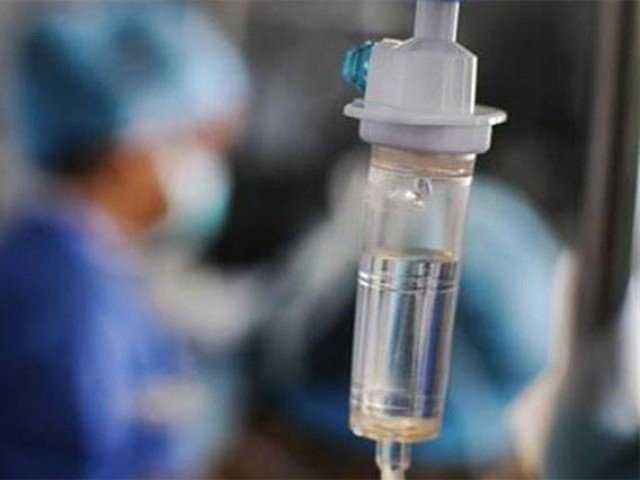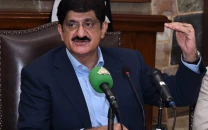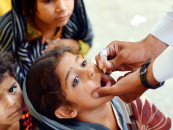Sindh lags behind in health expenditure
Only Rs2.26b of Rs15.5b allocation spent this fiscal year

PHOTO: EXPRESS
The health department’s performance in terms of spending development funds has been remarkably poor - Rs7.38 billion was released in the first nine months of the 2017-18 fiscal year, compared to the total allocation of Rs15.5 billion, whereas expenditure remained dismally low at a mere Rs2.26 billion, according to documents released by the finance department on progress up to March, 2018.
In the health sector, the total ADP schemes are 208, of which 107 are being carried forward while 101 are new schemes. The total allocation for carried forward schemes in the 2017-18 budget was Rs12.4 billion, of which only Rs7.11 billion was released in the first nine months and utilisation was recorded at Rs2.23 billion.
Among the 101 new schemes that were started in 2017-18 with a total allocation of Rs3.1 billion, only Rs264 million was released. Of the total released amount, only Rs25 million was spent on the schemes.
The provision of equipment for a surgical complex at the Jinnah Postgraduate Medical Centre in Karachi was to be done at an estimated cost of Rs425million. A total amount of Rs325 million was allocated and released but expenditure on the project has been nil so far.
‘Federal budget is people-friendly’
Another such scheme with no expenditure is the establishment of a 50-bed medical and surgical ICU and the expansion of the casualty and outpatient departments at Liaquat University Hospital, Hyderabad. The total allocation for the scheme in the 2017-18 was Rs149 million while only Rs74.5 million was released.
The establishment of a 50-bed medical and surgical ICU and expansion of the casualty and outpatient departments at Chandka Medical College Hospital, Larkana was approved in 2012 at an estimated cost of Rs178.5 million. The total allocation in the current fiscal year is Rs50 million but only Rs1.25 million has been released and no expenditure has been shown in the finance department’s documents.
The establishment of the Benazir Institute of Urology and Transplantation in Shaheed Benazirabad district at an estimated cost of Rs741 million has a thrown forward amount of Rs359 million in the current fiscal year. The remaining amount of Rs359 million was allocated with releases of Rs334 million so far, with an expenditure of a mere Rs12.44 million.
The establishment of a 200-bed hospital and operation theatre at Ghulam Mohammad Mahar Medical College Hospital in Sukkur was estimated at Rs600 million with an allocation of Rs150 million, however, so far no funds have been released for the project.
The establishment of the Sindh Institute of Traumatology, Orthopaedics and Rehabilitation at NIPA in Gulshan-e-Iqbal was initially proposed at an estimated cost of Rs1.73 billion. It was thrown forward with an amount of Rs1.21 billion and allocation of Rs50 million. Rs42.5 million was released but no expenditure was recorded in the document.
CJP dissatisfied with conditions of public hospitals in Sindh
The expansion and improvement of Abbasi Shaheed Hospital to the level of a tertiary care hospital with a nursing school and replacing seven elevators at the hospital is being done at an estimated cost of Rs945 million with carried forward funds of Rs619 million. However, the allocated sum was Rs50 million with no funds released in the 2017-18 fiscal year.
The establishment of the Shaheed Benazir Bhutto Medical Complex along the National Highway near Razaqabad in Bin Qasim Town, which was approved in 2012 at an estimated cost of Rs1.43 billion, is still in limbo. The sum that was carried forward in the ongoing fiscal year is Rs854 million with an allocation and release of Rs150 million and just Rs70million spent so far.
The same is the case with the extension of the Sindh Institute of Urology and Transplantation, Karachi at an estimated cost of Rs1.51 billion. Of its total allocation of Rs150 million, only Rs75 million has been released and Rs37 million spent.
The construction of the Makhdoom Muhammad Zaman Talibul Moula Medical College and Teaching Hospital in Hala had been planned at an estimated cost of Rs4 billion but it was allocated a mere Rs47.5 million this fiscal year but no funds were released for the project.
Out of the Rs75 million released for the automation of the health department at an estimated cost of Rs1.2 billion, not a single penny has been spent. The government’s poor performance is once again illustrated in the case of the enhanced HIV/AIDS Control Programme in Sindh, which had an allocation of Rs453 million against which only Rs227 million was released but only Rs23 million spent.
Missing facilities plagued Sindh’s hospitals in 2017
The Chief Minster's Hepatitis Prevention and Control Programme in Sindh had an allocated amount of Rs900 million with Rs450 million released but only Rs100 million spent.
The Sindh Immunisation Support Programme (SISP) had a major allocation of Rs1.82 billion but the released amount stood at Rs454 million while a mere Rs120 million was spent on it in the first nine months of the fiscal year.
Health department official Rehan Balouch told The Express Tribune that due to the cumbersome process of schemes, tender approval and procurement, funds take time to be released. He added that there is almost a month and a half left for the end of the financial year. "The total expenditure will reach our target of 60% to 70% of the released amount until the closure of financial year as the majority of funds are spent in the last quarter of the fiscal year," he explained.



















COMMENTS
Comments are moderated and generally will be posted if they are on-topic and not abusive.
For more information, please see our Comments FAQ